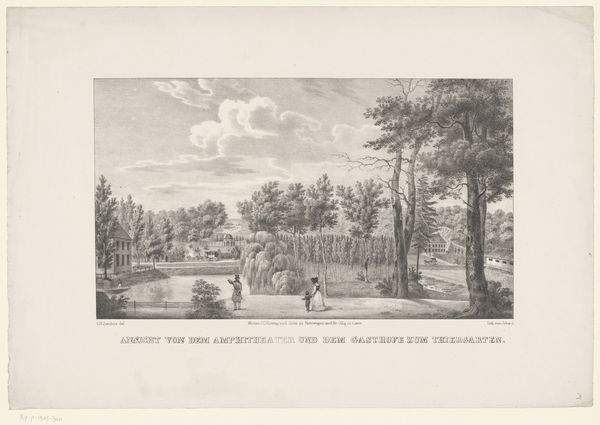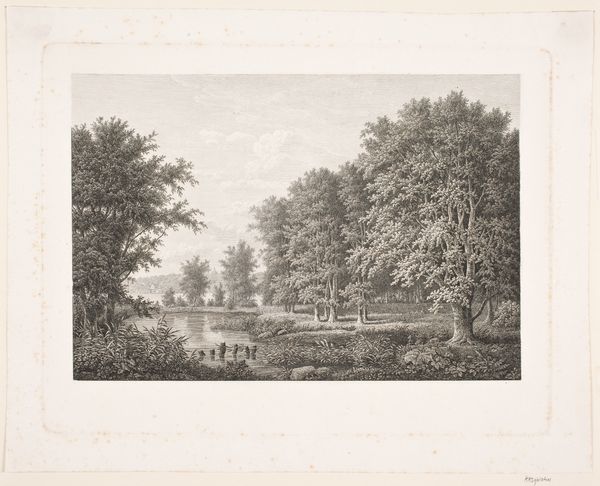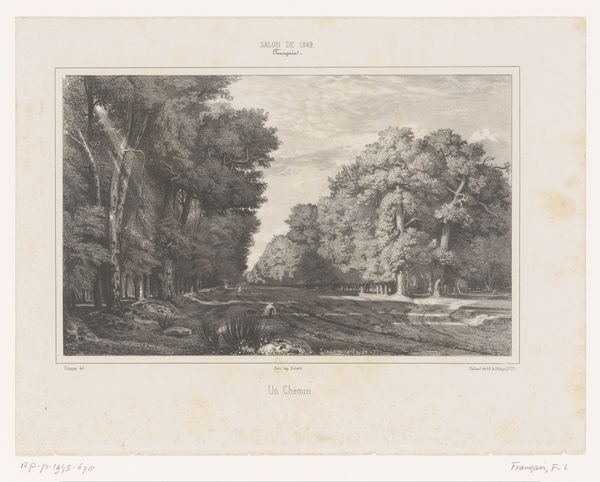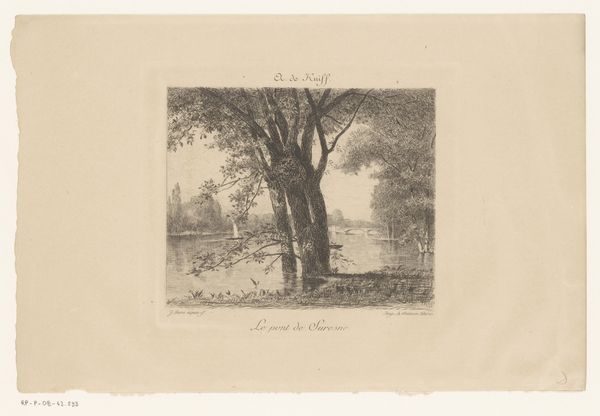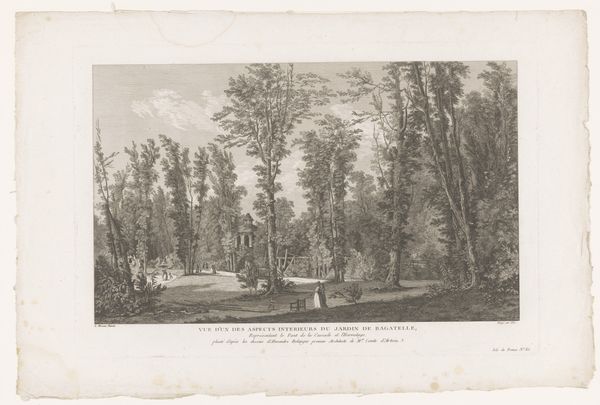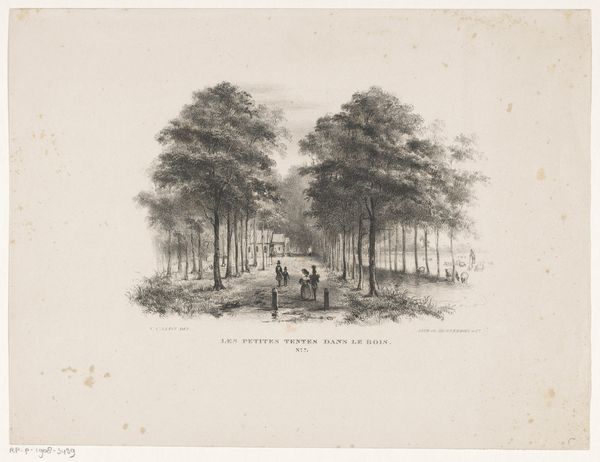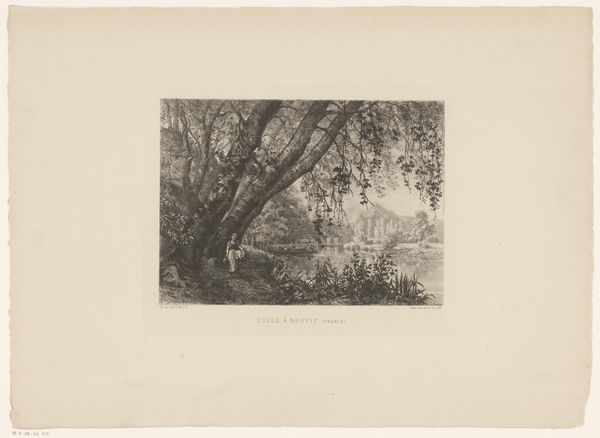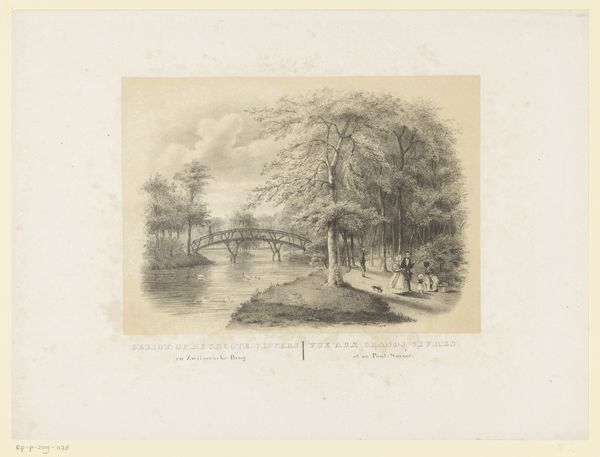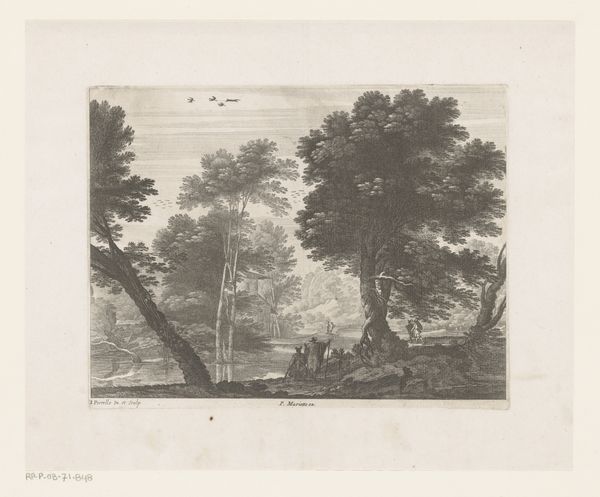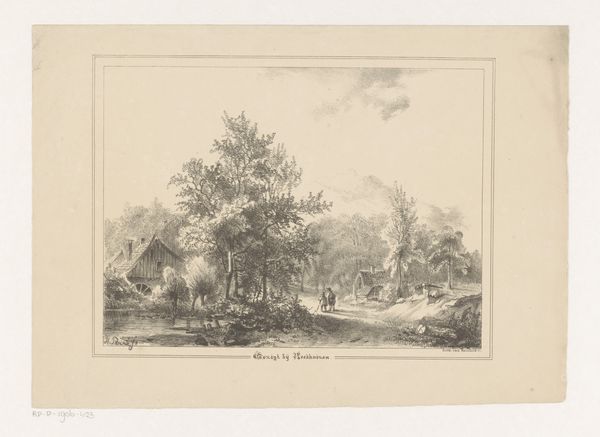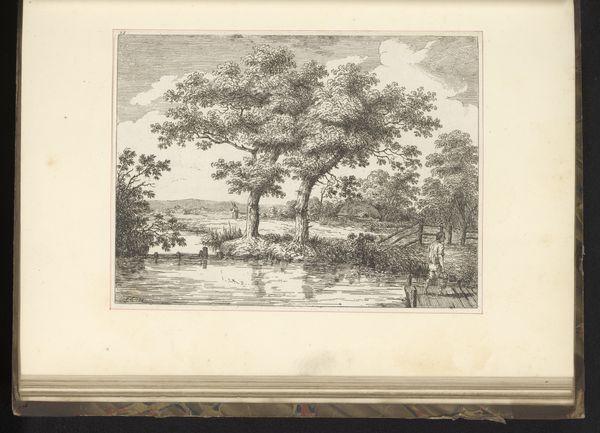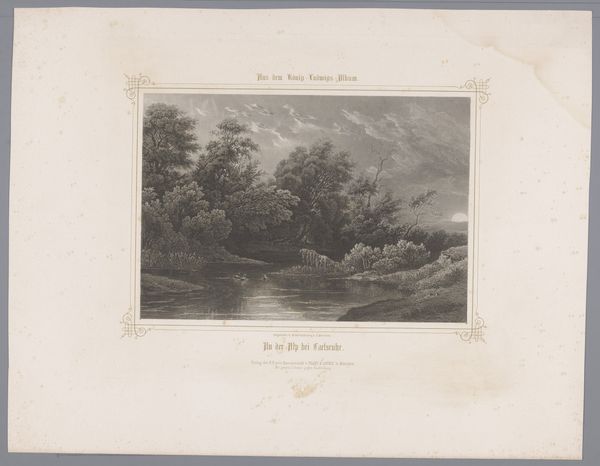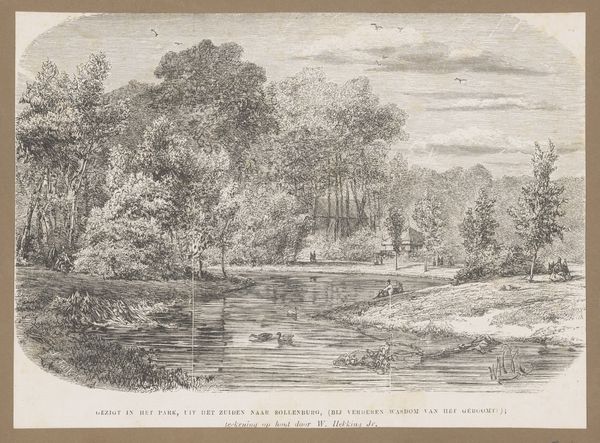
drawing, print, paper, pencil, engraving
#
drawing
#
aged paper
#
light pencil work
# print
#
pencil sketch
#
old engraving style
#
landscape
#
paper
#
forest
#
romanticism
#
pencil
#
pencil work
#
academic-art
#
engraving
#
realism
Dimensions: height 355 mm, width 430 mm
Copyright: Rijks Museum: Open Domain
Curator: This is E. Huygens' "Bosgezicht in Den Haag," made around 1820. It’s an engraving, so printed ink on paper, showcasing a view of the Haagse Bos, or the Woods of The Hague. Editor: It’s… serene, almost melancholic. The delicate pencil work, like gossamer threads, forms this dreamy landscape. And the aged paper itself lends to a sense of timelessness. Curator: That's an interesting perspective. Considering Huygens' background and the prevailing artistic currents, it reflects the Romantic movement's interest in the sublimity of nature. The woods, traditionally a space for aristocratic leisure, here become a subject worthy of artistic scrutiny. Editor: It’s interesting to think about who this was for, what it signified. The act of producing and consuming engravings like this, in multiple editions, meant wider circulation. How did the process of producing engravings democratize art viewership during this period? Curator: Exactly! The availability of prints challenged the established art market controlled by elite patronage. Also, you have to remember, places like the Haagse Bos, were subject to urbanization. So in the making and selling of images, one is actually offering visual records of places under pressure. Editor: Good point, documenting not just what is, but what is being lost. It raises questions about how artists engage with social change and how art contributes to shaping urban identity. Who was this person depicted on the right corner and was this location available for any individual? Curator: Good questions. This place was not restricted. The small figure could be Huygens himself maybe with his daughter? Let us delve into the cultural milieu of the time. The establishment of museums and galleries in the early 19th century began shaping public perceptions of art. Works like this contributed to constructing national narratives of nature and place. Editor: I suppose the art pieces of this period acted as not just works of art, but commodities in the creation of urban spaces. It definitely compels me to rethink my own preconceptions about 19th-century landscape art, and question our easy categories like high art versus craft. Curator: Likewise, I hadn’t quite framed this image’s function beyond the art circle before this discussion. Food for thought.
Comments
No comments
Be the first to comment and join the conversation on the ultimate creative platform.
